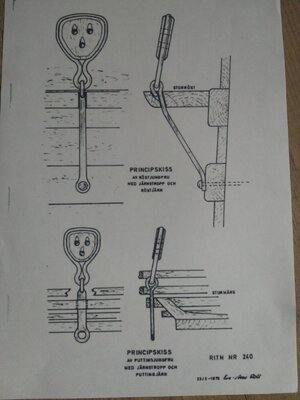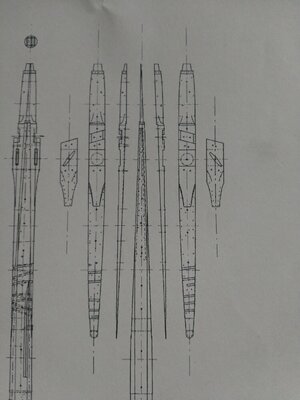Au contraire! (Pardon my French...) You can keep your sanity if you deal with one line at a time. If you first choose one specific type of line at a time, you rig it in an organized fashion thus:
1) Learn the name of the line and what its function is. For example, say you are looking install a fore topmast stay line.
2) Determine the routing path of the line. Refer to the paragraph in RC Anderson that talks about that specific line, for the ship from your country (if available). If Wasa, use any reference to Wasa mentioned or use Dutch style rigging for that line. This affects shape of crows feet and their position of blocks for stays, and attachment points of intervening blocks.
For our example stay, the upper end of the line loops around the masthead and that loop contains a mouse, and the other end probably has a crows foot containing blocks in a certain pattern that connects it to the bowsprit, with the bitter end sometimes belayed somewhere on the beakshead or forecastle railing. Below are foreign (non-English) examples.
View attachment 270315
3) Highlight that paragraph if using an e-book on the computer screen or place a bookmark in your cheaply bought hardcopy from Amazon. You will come back to this spot a few times in this process to re-read it.
4) Lay the drawing out and attempt to locate the line in question, and try to match the connection end points, especially if you have source material that shows a belaying point on the lowest end of the line.
5) compare the attachment points of the drawing to the book reference, noting differences. Look at choices in block locations, direction of routing the line, as well as end attachment points such as belaying point locations.
6) Among the differences, if any, choose the one that seems to be the most credible. If you have a belaying plan, you are in luck. If not, you may have to choose a belaying point on the rails, kevel, cleat, or belaying pin based on typical belaying plans used on other ships of similar size, time period and nationality.
7) For standing rigging, choose the end that has the worst access and tie the end of the line at that point first, then route the line, tension the line to the appropriate tension, and tie off the opposite end of the line. Apply dilute PVA to knots.
8) For running rigging lines, rig the line, starting at the lowest belaying point because it's very crowded for fingers/tools, and route the line through intervening blocks until you get to the end point. Pull the line to the proper tension. Sometimes slack lines that droop are more realistic, so look at paintings for examples. Attach the end of the line at the endpoint on yards or masts. Apply dilute PVA to knots.
9) PROFIT.












